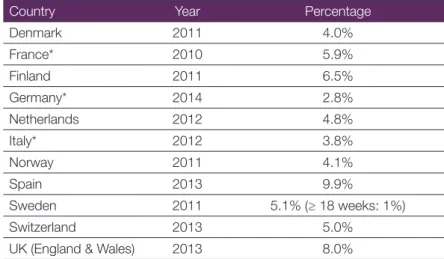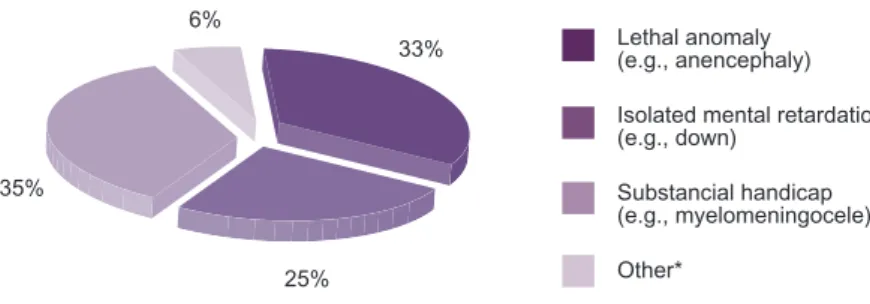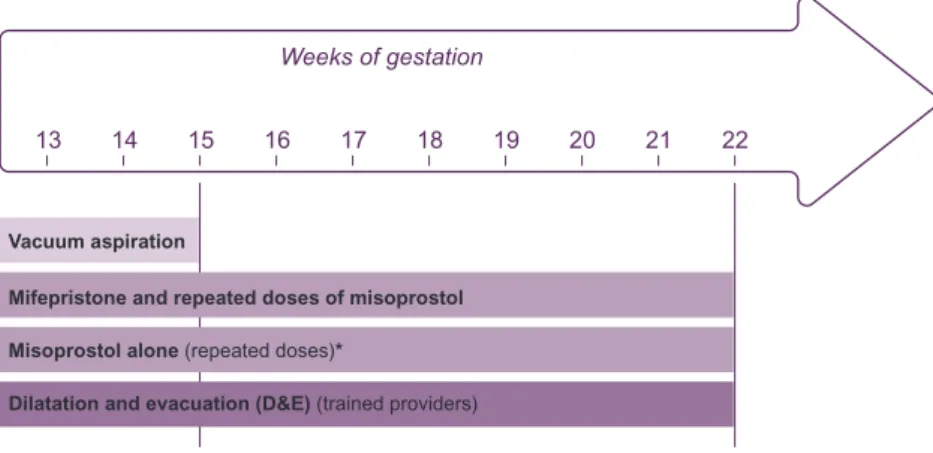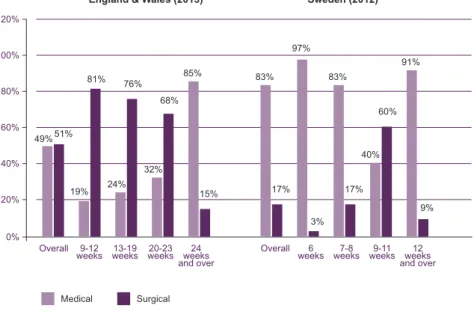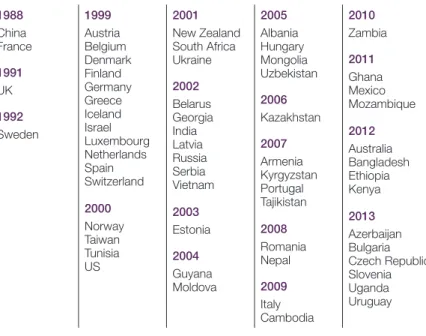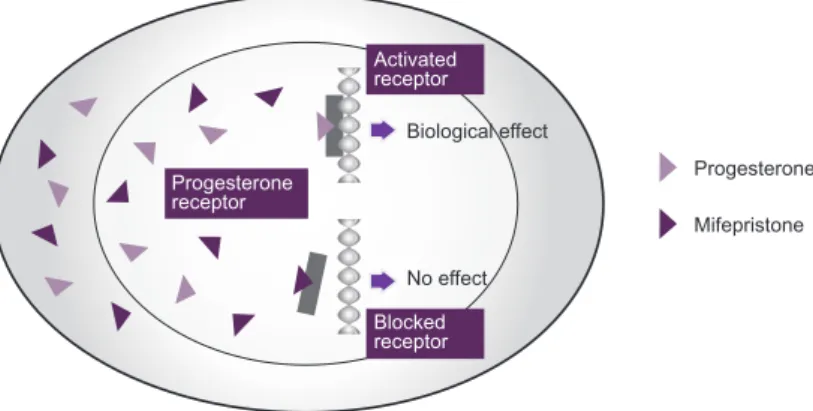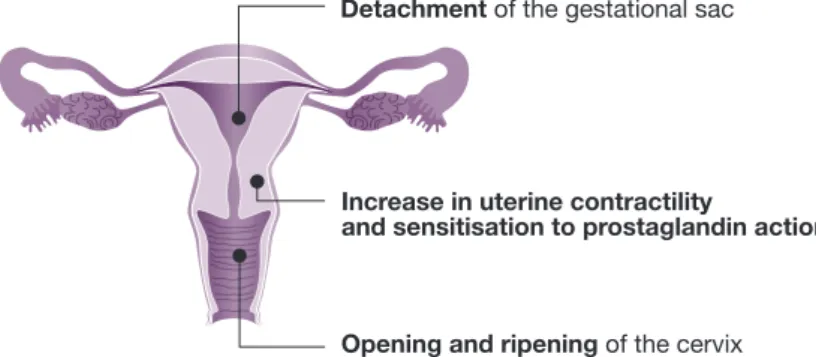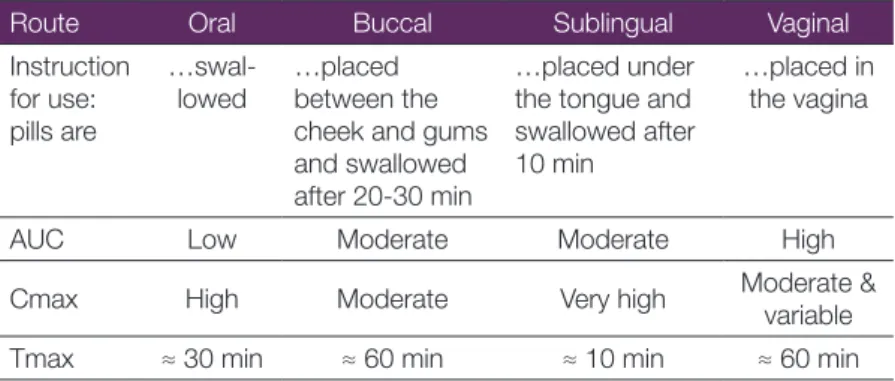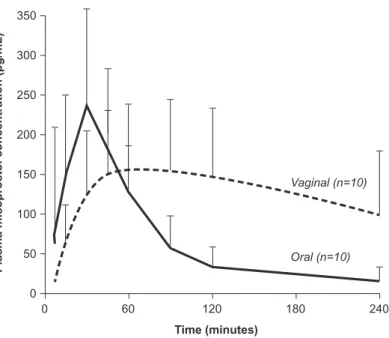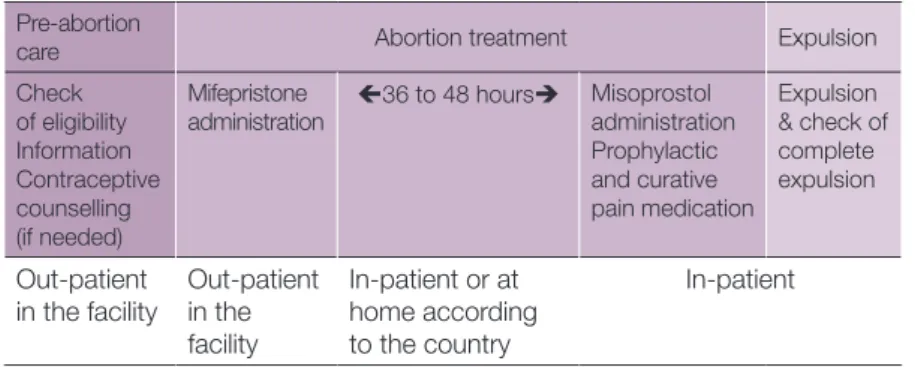Division of Obstetrics and Gynaecology, Department of Women’s and Children’s Health, Karolinska Institutet, Karolinska University Hospital, Stockholm, SWEDEN.
- Christian FIALA, MD, PhD, gynaecologist-obstetrician, Gynmed Clinic, Vienna, AUSTRIA.
- Aubert AGOSTINI, MD, gynaecologist-obstetrician, La Conception University Hospital, Marseille, FRANCE.
- Sharon CAMERON, MD, gynaecologist-obstetrician, Department of Reproductive and Development Sciences, University of Edinburgh, Chalmers Sexual and Reproductive Health Centre & Royal Infirmary of Edinburgh, Edinburgh, UNITED KINGDOM.
- Teresa BOMBAS, MD, gynaecologist-obstetrician, Obstetric Unit, Maternidade Doctor Daniel de Matos, Centro Hospitalar e Universitário de Coimbra, PORTUGAL.
- Roberto LERTXUNDI, MD, Department of Gynaecology and Human Reproduction Clinica Euskalduna Bilbao, Euskadi, SPAIN.
- Marek LUBUSKY, MD, PhD, gynaecologist-obstetrician, Department of Obstetrics and Gynaecology, Palacky University Hospital, Olomouc, CZECH REPUBLIC.
- Mirella PARACHINI, MD, gynaecologist-obstetrician, Department of Obstetrics and Gynaecology, San Filippo Neri Hospital, Rome, ITALY.
Acknowledgements: The authors gratefully acknowledge the contribution of all those who worked on drawing up this practical guide, and in particular Fabienne PERETZ (medical writer) and Bruno SIMON (graphic designer).
ISBN: 978-2-9553002-0-6
Copyright: Affinités Santé, 2015
All rights reserved. No part of this publication may be reproduced, stored in a retrieval system or transmitted in any form or by any means, electronic, mechanical, photocopying, recording or otherwise, without the written permission of the copyright holder.
Today in 2015 it is hard to recall the misery, unhappiness, and mortality associated with unplanned and unwanted pregnancy in women which existed when I began my practice 50 years ago. About 15% of normal pregnancies abort spontaneously (miscarry) and in many more abortion is induced. Even today unsafe abortion is a significant cause of maternal mortality in many countries. Improvements in contraception and maternal health, together with liberalization of the laws which regulate the grounds for safe abortion, have reduced the risk of abortion-related death. The major challenge remaining is to ensure that effective methods of inducing abortion are made available to the majority of women who are confronted with an unwanted pregnancy.
Throughout history women have tried many different methods for terminating pregnancy, many of which were ineffective, and some dangerous. Research into better, safer methods was inhibited in many countries by legal and ethical issues. In response to pressures from women demanding more control over their own reproduction and to society’s concern about the pressure of increasing world
population, the 20th Century saw renewed interest in developing
better methods of birth control. In addition to discovering the oral contraceptive pill (OC) as early as 1960 Gregory Pincus predicted the use of compounds which blocked the action of progesterone (antiprogestogens) as effective contraceptives and medical abortifacients.
New medical methods of inducing abortion were soon extended to terminating pregnancy at these later stages of gestation. These new methods reproduce pharmacologically the hormone changes
the cervix. In these women the discovery of medical preparations of antiprogestogens and prostaglandins is particularly useful as alternatives and/or in addition to surgery. Using a single dose of mifepristone prior to induction of uterine contractions with repeated doses of prostaglandin will bring about complete abortion in the majority of the cases within 12 hours. Thus the procedure can be completed as a day case.
Medical methods of inducing second trimester abortion have made the procedure safer and much more accessible to women world-wide.
David T Baird
Emeritus Professor of Obstetrics and Gynaecology University of Edinburgh - Scotland
EDITORIAL 1
TABLE OF CONTENTS 3
List of tables 5
List of figures 5
INTRODUCTION 7
What is abortion beyond the 1st trimester? 9
Definitions 9 Regulation 10 Frequency 11 Main reasons for abortion beyond the 1st trimester 13
Methods for abortion beyond the 1st trimester 14
What is medical abortion beyond the 1st trimester? 15
Authorised drugs 16
Mechanisms of action 18
Abortion with a combination of mifepristone and misoprostol 22 Efficacy of medical abortion beyond the 1st trimester 23
Safety of medical abortion beyond the 1st trimester 24
Conclusion 25 References 26
PRE-ABORTION CARE 27
Which women are eligible for medical abortion beyond the 1st trimester? 29
How to support the women? 30
Counselling 30
Viewing the fetus 30
Information on abortion 31
Informed consent form 33
What are the arguments in favour of medical or surgical methods? 35 What should healthcare professionals do prior to medical abortion? 36
Clinical and social history-taking 36
Gestational age confirmation 36
Clinical assessment and laboratory investigations 37
Infection screening 37
Pre-abortion treatments 37
the 1st trimester? 43
Mifepristone 43 Misoprostol 43
Where can medical abortion beyond the 1st trimester be performed? 44 How to perform medical abortion beyond the 1st trimester? 44
First visit 44
Second visit 45
What are the immediate side effects? How should they be prevented/ managed? 46
Pain and abdominal cramps 46
Bleeding/Haemorrhage 47 Other expected immediate side effects 47
How to manage women with the following conditions? 48
Prior caesarean section 48
Multifetal pregnancy 48
Fetal death 48
Pre-eclampsia 48
Delayed expulsion 49
Rh-negative women 49
How to prevent live birth in medical abortion beyond the 1st trimester? 50
Attitudes to feticide 50
Procedure for feticide 51
Good practice points 53
References 54
POST-EXPULSION CARE 55
How to monitor women after fetal expulsion? 57
How to manage retained or partially retained placenta? 57
How to manage accreta placenta? 57
How to manage bleeding/haemorrhage after successful medical abortion? 58 How to manage infection after successful medical abortion? 58
Q2. How to answer to the following questions? 66 Q3. How to find out more on medical abortion beyond the 1st trimester? 69
LIST OF TABLES
Table 1. Percentage of abortions performed beyond the
1st trimester in some European countries 11
Table 2. List of mifepristone approvals, 60 countries 17 Table 3. Misoprostol: pharmacokinetic parameters according
to administration route 20
LIST OF FIGURES
Figure 1. Severity of conditions leading to abortion for fetal anomaly
in France in 2010 13
Figure 2. Abortion methods beyond the 1st trimester 14 Figure 3. Legal abortion: percentage of surgical and medical
abortions according to gestation weeks in England
& Wales and in Sweden 15
Figure 4. Mifepristone’s action 18
Figure 5. Mifepristone’s action on the uterus 19 Figure 6. Plasma concentration according to misoprostol
administration route: oral and vaginal 21 Figure 7. Medical abortion beyond the 1st trimester: the process 22
Figure 8. Example of information form 32
What is abortion beyond the 1st trimester? 9
Definitions 9
Regulation 10
Frequency 11
Main reasons for abortion beyond the 1st trimester 13
Methods for abortion beyond the 1st trimester 14
What is medical abortion beyond the 1st trimester? 15
Authorised drugs 16 Mechanisms of action 18 Abortion with a combination of mifepristone and misoprostol 22 Efficacy of medical abortion beyond the 1st trimester 23
Safety of medical abortion beyond the 1st trimester 24
Conclusion 25 References 26
medical reasons, danger to the health or life of the woman, or serious malformation of the fetus.
The objective of this chapter is to give an overview of abortion beyond the 1st trimester.
WHAT IS ABORTION BEYOND THE 1ST TRIMESTER?
DEFINITIONS
Abortion is defined as termination of pregnancy if the fetus is not
viable outside the uterus either because of intrauterine fetal death or because the pregnancy is early and the fetus not sufficiently developed.
Very few abortions are performed beyond 24 weeks because at this stage fetal viability outside the uterus begins.
Abortion can be induced or spontaneous (“miscarriage”). Induced abortion can be medical or surgical.
Medical abortion is abortion induced by a pharmacological procedure.
Fetal deathin utero is intrauterine death irrespective of the duration of pregnancy, that is not an induced termination of pregnancy. Legally, fetal death is usually recorded when fetal weight is at least 500 g or gestational age is at least 20 weeks. The term “miscarriage” is usually used to refer to fetal death before 20 weeks’ gestation and “stillbirth” to refer to fetal death at 20 weeks’ gestation or more.1 After
confirmation of the diagnosis of fetal death, if labour does not start, management of fetal death involves abortion (to complete expulsion).
The 1st trimester of pregnancy is generally considered as the first 12 or 14 weeks of pregnancy (i.e., 84 to 104 days’ gestation).2, 3 Duration
of pregnancy or gestational age is the number of days (or weeks)
since the 1st day of the last normal menstrual period in women with
regular cycles, or the day since conception in assisted reproductive treatment.
In this practical guide “medical abortion” is defined as medically induced termination of pregnancy and includes intrauterine fetal death (IUFD) requiring pharmacological expulsion of the fetus.
REGULATION
In Europe, abortion beyond the 1st trimester is allowed in all countries for medical reasons (risk to woman’s life or health, or fetal malformation).
Depending on the country, it may also be allowed in situations related to the circumstances of the conception, the woman’s age, or on demand (e.g., abortion on demand is allowed until 24 weeks in Great Britain and 22 weeks in Netherlands). There is no upper limit for permission in case of fetal malformation not consistent with the future life of the child.
Many women who cannot obtain abortion beyond the 1st
trimester in their country go to countries with easier access or are forced to go through complicated applications or waiting periods.
Kristina GEMZELL-DANIELSSON: “In Sweden, termination of pregnancy is legally defined as an intervention to save the life of the woman and the forthcoming “baby”, whereas abortion is aimed at interrupting pregnancy but not to give birth to a living baby.”
To know more on specific abortion policies in Europe and outside, including conditions to fulfil, please go to:
www.abortion-clinics.eu OR
FREQUENCY
Abortion beyond the 1st trimester constitutes less than 15% of all
induced abortions worldwide.4 In Europe the rate ranged between 2
and 10% (Table 1).
Table 1. Percentage of abortions performed beyond the 1st trimester
in some European countries
Country Year Percentage
Denmark 2011 4.0% France* 2010 5.9% Finland 2011 6.5% Germany* 2014 2.8% Netherlands 2012 4.8% Italy* 2012 3.8% Norway 2011 4.1% Spain 2013 9.9% Sweden 2011 5.1% (≥ 18 weeks: 1%) Switzerland 2013 5.0%
UK (England & Wales) 2013 8.0%
* A significant number of women from these countries (up to 20%) go to another country for abortion, mainly the Netherlands and UK. They are included in the statistics for the country where the abortion was performed, and not in the statistics for the country of residence.
To know more on abortion statistics, please go to national statistics. - Belgium: http://www.senate.be/www/?MIval=/publications/ viewPubDoc&TID=83893003&LANG=fr - Czech Republic: http://www.uzis.cz/katalog/zdravotnicka-statistika/ potraty - France: http://www.ined.fr/statistiques_ivg/2010/ - Germany: https://www.destatis.de/DE/ZahlenFakten/ GesellschaftStaat/Gesundheit/Gesundheitsausgaben/ Gesundheitsausgaben.html - Italy: http://www.salute.gov.it/portale/documentazione/ p6_2_2_1.jsp?lingua=italiano&id=2226 - Netherlands: www.rutgersnissogroep.nl - Nordic countries: www.thl.fi/en/web/thlfi-en/statistics/statistics-by-topic/ sexual-and-reproductive-health/abortions/induced-abortions-in-the-nordic-countries - Portugal: http://www.saudereprodutiva.dgs.pt/publicacoes/ interrupcao-da-gravidez/relatorio-de-registos-de-interrupcao-da-gravidez-2013.aspx - Spain: https://www.msssi.gob.es/profesionales/saludPublica/ prevPromocion/embarazo/docs/IVE_2013.pdf - Sweden: www.sos.se
MAIN REASONS FOR ABORTION BEYOND THE 1ST TRIMESTER
Overall, in Europe, abortions beyond the 1st trimester are usually
performed for medical reasons. However, in some cases, they are performed as women present late due to logistic or financial difficulties in obtaining abortion services or failure to recognise an undesired pregnancy.
Among medical reasons, fetal malformation accounts for more than 80% of the cases. In case of maternal medical indication and possible viable fetus, the healthcare professional should take any appropriate action to save the life of the fetus.
In a French study,5 fetal anomalies leading to abortion beyond the 1st
trimester were usually serious, and sometimes incompatible with life outside the uterus (Figure 1).
Figure 1. Severity of conditions leading to abortion for fetal anomaly in France in 2010.5
METHODS FOR ABORTION BEYOND THE 1ST TRIMESTER
Main methods are presented in Figure 2.
Figure 2. Abortion methods beyond the 1st trimester
According to the World Health Organisation (WHO),2 after 12
completed weeks since the last menstrual period, the preferred medical method for abortion is mifepristone followed by repeated doses of a prostaglandin (misoprostol) and the preferred surgical method is dilatation and evacuation (D&E).
In many parts of the world, D&E is the standard method. However, where a combined mifepristone-misoprostol regimen is available and/ or where the providers are not trained for surgical abortion, medical abortion is recommended.
Figure 3 presents the percentages of medical and surgical abortions in England & Wales and Sweden.
Figure 3. Legal abortion: percentage of surgical and medical abortions according to gestation weeks in England & Wales and in Sweden
Source: UK: https://www.gov.uk/government/collections/abortion-statistics-for-england-and-wales; Sweden: http://www.socialstyrelsen.se/statistik/statistikefteramne/aborter
WHAT IS MEDICAL ABORTION BEYOND THE 1ST TRIMESTER?
It comprises a combination of mifepristone and misoprostol.
This combination is the method recommended by the WHO for medical abortion.
Both drugs are in WHO’s essential medicines list.6
AUTHORISED DRUGS
Mifepristone, also known as abortion pill, formerly called RU-486, is a hormone blocking the receptors of progesterone. Its trade name in Europe is Mifegyne®. Mifegyne® is the only drug approved in this
indication.
Mifepristone was developed by Etienne-Emile BAULIEU and colleagues, from the French national institute of health and medical research (INSERM) and a pharmaceutical company ROUSSEL-UCLAF. Its ability to increase the sensitivity of the pregnant uterus to prostaglandins was demonstrated by Marc BYGDEMAN, at the Karolinska Hospital in Stockholm, Sweden. Marc BYGDEMAN developed the combined regimen.
In Europe, medical abortion with mifepristone and prostaglandin was first approved in 1988 in France (originally only up to 7 weeks’ amenorrhea) followed by approvals in the United Kingdom in 1991 and in Sweden in 1992 (up to 9 weeks’ amenorrhea), and then in several other European countries.
Mifepristone was first approved for abortion beyond the 1st
trimester in 1994.
Table 2 presents a list of countries where mifepristone is approved, with year of approval.
Table 2. List of mifepristone approvals, 60 countries 1988 China France 1991 UK 1992 Sweden 1999 Austria Belgium Denmark Finland Germany Greece Iceland Israel Luxembourg Netherlands Spain Switzerland 2000 Norway Taiwan Tunisia US 2001 New Zealand South Africa Ukraine 2002 Belarus Georgia India Latvia Russia Serbia Vietnam 2003 Estonia 2004 Guyana Moldova 2005 Albania Hungary Mongolia Uzbekistan 2006 Kazakhstan 2007 Armenia Kyrgyzstan Portugal Tajikistan 2008 Romania Nepal 2009 Italy Cambodia 2010 Zambia 2011 Ghana Mexico Mozambique 2012 Australia Bangladesh Ethiopia Kenya 2013 Azerbaijan Bulgaria Czech Republic Slovenia Uganda Uruguay
Source: http://gynuity.org/downloads/biblio_ref__lst_mife.pdf. Update 04.2015
Misoprostol is an E1 prostaglandin. Its most widely used brand
name is Cytotec®. The manufacturer of Cytotec® has never applied
for approval for this indication anywhere in the world. It is approved in most European countries to prevent gastric ulcer. It is recommended by all evidence based guidelines for abortion in association with mifepristone or alone if mifepristone is not available.
Gemeprost, another E1 prostaglandin, was formerly used in medical abortion but is no longer recommended. Compared to gemeprost, misoprostol is at least as effective, has fewer side-effects (especially pain), is cheaper, and easier to dose. In addition, misoprostol dosage can be adapted to the individual needs and the product can be stored in its blister at room temperature.
MECHANISMS OF ACTION
Mifepristone is a hormone with 5- to 8-fold greater binding affinity to
the progesterone-receptor than progesterone.7,8
It competitively blocks the progesterone receptors (Figure 4), and
consequently prevents the effect of progesterone, which is necessary for the maintenance of a pregnancy.
Mifepristone has 3 clinically important actions (Figure 5):9
• DECIDUA: its effect on decidua leads to detaching the sac.
• MYOMETRIUM: it increases its contractility by affecting membrane potential and sensitising it to prostaglandin.
• CERVIX: it softens and dilates the cervix. Figure 5. Mifepristone’s action on the uterus
Mifepristone needs to be taken orally.
After oral administration, mifepristone peak plasma levels are reached
within 2 hours. Mifepristone’s clinical effects begin at 12-24
hours after intake. This effect is maximal at 36-48 hours. Half-time in plasma is 24 to 48 hours. Mifepristone has 3 metabolites, with similar action on the progesterone receptor. Other administration routes have poor absorption rates and are not recommended.
Mifepristone is effective throughout pregnancy (as long as progesterone is needed and present).
Misoprostol is a prostaglandin E1 analogue.
Its active metabolite (misoprostol acid) induces contractions of the uterus and expulsion of the pregnancy. The effect is enhanced by prior mifepristone administration, which sensitizes the myometrium to prostaglandin.
Misoprostol is to be given 36 to 48 hours after mifepristone.
In countries where mifepristone is not available, misoprostol can be used alone.
Misoprostol is effective on multiple administration routes.
However, where approved in Europe, it is licensed as tablets for oral use. The pharmacokinetics and bioavailability of misoprostol differ according to administration route (Table 3 and Figure 6).10,11 The
plasma half-life of misoprostol acid is 20-40 minutes.
Table 3. Misoprostol: pharmacokinetic parameters according to the route of administration
Route Oral Buccal Sublingual Vaginal
Instruction for use: pills are
…swal-lowed …placed between the cheek and gums and swallowed after 20-30 min
…placed under the tongue and swallowed after 10 min
…placed in the vagina
AUC Low Moderate Moderate High
When used in combination with mifepristone, misoprostol should be taken ideally 36 to 48 hours after mifepristone. If, for practical, reasons that cannot be scheduled, a 24-hour interval is acceptable, although abortion time interval is slightly increased.
Figure 6. Plasma concentration according to misoprostol administration route: oral and vaginal
Area under the curve (AUC) for plasma concentration of misoprostol is greater and maximum concentration (Cmax) is lower after vaginal than oral administration, possibly explaining the greater efficacy of vaginal administration.
If bleeding has started or in case of bacterial vaginosis, absorption
of vaginal misoprostol may be affected and efficacy diminished.12,13
This probably explains the variability in pharmacokinetics with the vaginal route and the decreasing efficacy with successive doses of misoprostol.12
Christian FIALA: “Remnants of tablets may be found following vaginal administration. This does not affect efficacy as remnants only contain excipients,
ABORTION WITH A COMBINATION OF MIFEPRISTONE AND MISOPROSTOL
Medical abortion is a process involving the administration of 2 drugs (Figure 7).
• Mifepristone is usually taken in the healthcare facility, depending on the legal situation.
Before intake, the healthcare professional has to confirm the woman’s eligibility for medical abortion and inform her about medical abortion, the possibility of seeing the fetus, and future contraception (if needed).
• 36 to 48 hours later, misoprostol is administered in the healthcare facility and the woman remains in the facility until complete expulsion has been confirmed.
The healthcare professional may consider pre-procedural feticide before misoprostol intake in some situations.
Figure 7. Medical abortion beyond the 1st trimester: the process
Pre-abortion
care Abortion treatment Expulsion
Check of eligibility Information Contraceptive
Mifepristone
administration 36 to 48 hours Misoprostol administration Prophylactic and curative Expulsion & check of complete expulsion
The combination of mifepristone and misoprostol has a synergic effect. Compared to prostaglandin alone, it increases efficacy and shortens induction to abortion time, it allows a lower dose of misoprostol to be used, and reduces side effects.
EFFICACY OF MEDICAL ABORTION BEYOND THE 1ST TRIMESTER
In clinical trials,14,15,16
• The success rate ranges between 92% and 100%.
• The induction-to-abortion interval after the 1st dose of misoprostol
ranges between 4 and 12 hours.
• The mean number of misoprostol doses is < 3.
The following factors affect success rates:
• Details of the mifepristone-prostaglandin regimen.
Regimens vary in terms of dose, interval and misoprostol administration route.
• Healthcare professional’s skills.
Surgical evacuation of the uterus after treatment is sometimes performed prematurely by non-trained healthcare professionals.
Surgical evacuation is indicated if retained placenta has been diagnosed, in case of significant bleeding, or if the medical abortion fails and the woman does not want to repeat the medical treatment.
Surgical intervention is necessary in less than 10% of cases.
Sharon CAMERON: “In Great-Britain, women have two visits at a 36-48 hour interval: one short visit for checking eligibility and mifepristone administration, and then, one for misoprostol administration that lasts up to expulsion. There is increasingly no routine post-abortion follow-up visit.”
Aubert AGOSTINI: “For patients who did not expel immediately after medical treatment, it is important to repeat the medical treatment instead of doing surgical evacuation.”
SAFETY OF MEDICAL ABORTION BEYOND THE 1ST TRIMESTER
The risk of complications increases with gestational age.
In 2013, in England & Wales, the complications rate with medical procedures was 2/1,000, increasing from 1/1,000 between 3 and 9
weeks of gestation to 21/1,000 at 20 weeks and over.17
Therefore medical abortion should be performed as early as possible, without any unnecessary delay, to reduce complications.
However, serious complications (uterine rupture, haemorrhage, infection) following medical abortion beyond the 1st trimester
remain rare.15 In a study involving 80 women requesting 2nd trimester
abortion and treated with 600 mg mifepristone followed by 800 µg misoprostol (vaginal route) and subsequently up to four 400 µg doses of misoprostol (oral route), no serious complications were reported.18
In another study 385 of the 386 women who underwent medical termination of pregnancy between 12 and 24 weeks of gestation (i.e., 200 mg of mifepristone orally followed 36 to 48 hours later by 400 µg of vaginal misoprostol, up to 4 doses every 3 hours) aborted without complications.19
CONCLUSION
1. In this practical guide medical abortion beyond the 1st
trimester is defined as termination of pregnancy induced by a pharmacological procedure after the first 12-14 weeks after the 1st day of the last normal menstrual period. It includes treatment
of intrauterine fetal death (IUFD).
2. In Europe, abortion beyond the 1st trimester is legal under certain
conditions (e.g., fetal medical anomalies). This represents 2% to 10% of all abortions.
3. Medical abortion beyond the 1st trimester is done by a
combination of mifepristone and misoprostol.
4. Medical abortion is the recommended method if the combined mifepristone-misoprostol regimen is available and
especially when providers are not trained for surgical
abortion.
5. The combination of mifepristone and misoprostol has a synergistic effect: compared to the misoprostol alone, it increases efficacy and shortens induction to abortion time, it allows a lower dose of misoprostol to be used, and so reduces side effects.
6. Medical abortion beyond the 1st trimester is at higher risk of
complications than abortion during the 1st trimester. To reduce complications, abortion should be performed as early as possible, without unnecessary delay.
7. The medical abortion procedure includes oral
administration of mifepristone after previous confirmation of eligibility for medical abortion and oral, sublingual or vaginal intake of misoprostol 36 to 48 hours later. Women have to remain in the healthcare facility after misoprostol intake until complete expulsion. Contraception counselling and information are to be provided before the method is implemented.
REFERENCES
1. Barfield WD; Committee on Fetus and Newborn. Standard terminology for fetal, infant, and perinatal deaths. Pediatrics 2011; 128(1): 177-81.
2. World Health Organization (WHO). Safe abortion: technical and policy guidance for health systems. WHO Geneva, Switzerland 2012.
3. World Health Organization (WHO). Clinical practice book for safe abortion: technical and policy guidance for health systems. WHO Geneva, Switzerland 2014. 4. Lee VC, et al. Issues in second trimester induced abortion (medical/surgical
methods). Best Pract Res Clin Obst Gynaecol 2010; 24(4): 517-2.
5. Dommergues M, et al. Termination of pregnancy following prenatal diagnosis in France: how severe are the fœtal anomalies? Prenat Diagn 2010; 30(6): 531-9. 6. World Health Organization (WHO). WHO Model List of Essential Medicines. 18th
List (April 2013) (Final Amendments – October 2013).
7. Moguilewsky M, Philibert D. Biochemical profile of RU 486. In: Baulieu EE, Segal SJ, editors. The antiprogestin steroid RU 486 and human fertility control. New York: Plenum Press 1985: 87-97.
8. Lähteenmäki P, et al. Pharmacokinetics and metabolism of RU 486. J Steroid Biochem 1987; 27: 859-63.
9. Spitz IM, Bardin CW. Mifepristone (RU 486) – A modulator of progestin and glucocorticoid action. N Engl J Med 1993; 329(6): 404-12.
10. Tang OS, et al. Misoprostol: pharmacokinetic profiles, effects on the uterus and side-effects. Int J Gynaecol Obstet 2007; 99 Suppl 2: S160-7.
11. Zieman M, et al. Absorption kinetics of misoprostol with oral or vaginal administration. Obstet Gynecol 1997; 90(1): 88-92.
12. Tang OS, et al. Pharmacokinetics of repeated doses of misoprostol. Hum Reprod 2009; 24(8): 1862-9.
13. Sioutas A, et al. Effect of bacterial vaginosis on the pharmacokinetics of misoprostol in early pregnancy. Hum Reprod 2012; 27(2): 388-93.
14. Ashok PW, et al. Midtrimester termination of pregnancy: a review of 1002 consecutive cases. Contraception 2004; 69: 51-8.
15. Lalitkumar S, et al. Mid-trimester induced abortion: a review. Human Reproduction Update 2007; 13(1): 37-52.
16. Gemzell-Danielsson K, Lalitkumar S. Second trimester medical abortion with mifepristone and misoprostol alone: a review of methods and management.
Which women are eligible for medical abortion beyond
the 1st trimester? 29
How to support the women? 30
Counselling 30
Viewing the fetus 30 Information on abortion 31 Informed consent form 33 What are the arguments in favour of medical or surgical
methods? 35 What should healthcare professionals do prior to medical abortion? 36 Clinical and social history-taking 36 Gestational age confirmation 36 Clinical assessment and laboratory investigations 37 Infection screening 37 Pre-abortion treatments 37 What should women know before medical abortion? 38 Good practice points 39
them to understand the situation and options, and to come to an informed self-determined decision.
• Examining women.
WHICH WOMEN ARE ELIGIBLE FOR MEDICAL ABORTION BEYOND THE 1ST TRIMESTER?
Medical contraindications to medical abortion are similar before and after the 1st trimester.
Absolute contraindications are: • Allergy to any of the induction drugs.
• History of inherited porphyria or chronic adrenal failure
(contraindications to mifepristone).
Medical abortion is to be performed with caution in women with: • History of long-term systemic corticosteroid use.
• Kidney or liver failure. • Severe anaemia.
• Pre-existing heart disease or cardiovascular risk factors. • Haemorrhagic disorder (i.e., severe coagulation disorder).
Women with the following characteristics are eligible for medical abortion, but need special care:1
• Retained intrauterine device (IUD). • Multifetal pregnancy.
• Uterine scar (risk of uterine rupture).
Healthcare professionals need to refer to their own national law and/or local regulations about counselling and other pre-abortion obligations.
HOW TO SUPPORT THE WOMEN?
Women need to be counselled and informed.2
COUNSELLING
Pre-abortion counselling should be provided as soon as possible, allowing abortion without undue delay.
Women should be free to choose to be counselled alone or with a partner, parent, or friend.
The aims of counselling are:
• To help the woman understand the situation and options, to come to a clear self-determined clear decision and to implement the decision.
• To assist her in controlling her future fertility (which recovers immediately with the next ovulation, 10 to 14 days after abortion) and pregnancies.
All staff involved in the care of a woman or couple facing a possible termination of pregnancy should adopt a supportive approach, offering active listening to what the woman has to say, practical information about abortion procedures, contraception (if needed) or future pregnancy, and information on what to expect if the woman (and her partner) want to view the fetus either during ultrasound examination or after delivery.
Abortion beyond the 1st trimester may require a multidisciplinary
approach involving doctors, nurses, genetic counsellors, psychologists, social workers, etc. In the facility, the role of each health professional is to be clearly defined.1
VIEWING THE FETUS
In medical abortion, the fetus is expelled in toto with conserved anatomy.
The option of seeing the fetus should be carefully discussed with the woman (and her partner), as this distressing experience
At the time of presentation, the woman (and her partner) should be guided by a professional who will be present during the procedure.
INFORMATION ON ABORTION
The following information should be provided to women during pre-abortion counselling:
• The various procedures available.
• How and where the procedures will be managed. • Benefits, contraindications, and risks of each procedure.
Written, objective, up-to-date evidence-guided information should be available for each woman before the medical abortion procedure.
An example of information form is in Figure 8.
Kristina GEMZELL-DANIELSSON: “Women should be free to choose whether they want to see or not the fetus after expulsion.”
Figure 8. Example of information form Patient Information on Medical Abortion
Beyond the 1st Trimester
You are more than 12 weeks pregnant and are going to have a medical abortion. This leaflet tells you about the treatment and how it is carried out.
The method
Medical abortion includes 2 visits and consists of 2 different drugs.
Remember that if you have any questions or concerns during the course of your treatment or follow up, you can ask the clinic or hospital staff. Visit 1 (Day 1) at the clinic/hospital
You will be given tablets (mifepristone) to swallow with some water. These tablets are taken to prepare the uterus for the expulsion. It blocks a hormone called progesterone that is necessary for the pregnancy to continue.
You are unlikely to feel anything until you take the next tablets.
However you may start to have some bleeding and therefore may want to insert a sanitary pad. In case you are experiencing anything unexpected or reacting badly to the medicine do not hesitate to contact the clinic/hospital.
It is very unlikely that you would pass the pregnancy before the next tablets of the treatment. Visit 2 (Day 3, ideally, 36 to 48 hours later) at the clinic/hospital
You will be given tablets of ‘misoprostol’ to swallow or insert in the vagina like a tampon). Misoprostol can be taken again 3 hours later and every 3 hours up to 4 doses until expulsion of the fetus. Misoprostol is very similar to the hormones that the womb releases during a natural period (known as prostaglandins). Misoprostol combined with the first part of the treatment, causes the lining of the womb to break down and the pregnancy is passed with bleeding.
At first, pain will be like period pain, but just before the miscarriage it may be very strong. The degree of pain and bleeding vary greatly from woman to woman and depends on how advanced the pregnancy is.
Painkillers (ibuprofen or opioids) are therefore given together with misoprostol. In addition, you should
What should I expect after a termination? • You will probably continue to have some
period-type pain for the rest of that day. You are advised to take your usual painkillers as instructed. • You can expect to have some bleeding for up
to 2 weeks. To reduce the risk of infection you are advised to use sanitary towels (i.e., NOT tampons) during this time.
• If following the procedure you feel generally unwell, feverish, or have offensive-smelling vaginal discharge then it is important that you contact your doctor, or the hospital unit immediately, as these may be signs of infection. • Emotionally a woman can experience many
feelings after an abortion. You may feel sad or have mixed feelings. These are natural reactions. A lot depends on the circumstances and reasons for having the abortion and how comfortable you are with the decision. It is always important to seek help and support if you are feeling distressed about having had an abortion. What are the risks at the time of abortion? The risks are small but include:
• Womb is not completely emptied (retained products) - This happens approximately 1 in every 100 abortions. Further treatment to empty the womb may be required.
• Excessive bleeding (haemorrhage) - This happens in around 1 in every 1000 abortions. • Failure to end the pregnancy -This happens
between 1 and 14 in every 1000 medical abortions.
• Infection - This is less common after a medical abortion. It occurs after approximately 1 in every 100 medical abortion.
Will abortion affect my future fertility? No - the present pregnancy confirms your fertility, and as long as there are no complications with the abortion, then it will not affect your chances of becoming pregnant again.
When can I start contraception?
Most women are fertile immediately after an abortion and so we recommend that women start an effective method of contraception on the same day as the procedure.
INFORMED CONSENT FORM
Figure 9. Example of information consent form
Medical Termination of Pregnancy Beyond the First Trimester:
(Please tick box)
I have been clearly informed on the therapeutic regimen
I understand that the medical procedure may take some time (over 24 hours) in a small number of cases and that there is a possibility of some retained tissue from the placenta. In such cases a further procedure (surgical or medical) may be needed.
I understand that there is a very small risk of rupture of the uterus with this procedure.
I understand that there is a very small risk of excessive bleeding necessitating blood transfusion and/or a surgical intervention with this procedure (approximately 1 in 1000).
I understand that there is a small risk of infection (approximately 1 in 100) following the procedure, and that antibiotics may be necessary.
I consent to receive all medications, exams or tests that would be useful in the course of my treatment
I realize there are possible side effects (nausea, diarrhea, vomiting, temperature, abdominal pain and cramping, and bleeding).
I understand that contraception should be started immediately after the procedure (if I do not plan to be pregnant within the 15 days following the procedure).
WHAT ARE THE ARGUMENTS IN FAVOUR OF MEDICAL OR SURGICAL METHODS?
Both methods are safe and effective.
Ideally, the method should be selected by both the woman and
the healthcare professional. But in many institutions only one
method is available, due to limited technical capacity and lack of experienced providers for both methods. Consequently women have no choice of method.
In choosing between medical and surgical methods for abortion beyond the 1st trimester the following considerations should be taken
into account:
From the woman’s perspective:
• Medical abortion is perceived as more natural by most women; it does not require anaesthesia; it requires the woman’s active participation and allows seeing the fetus.
Both these points may positively contribute to the mourning process.
• Surgical abortion is 1-2 day procedure, which can be an advantage, in particular when abortion is performed in another country. Pain and bleeding are of lower intensity during surgical than medical abortion.
From the healthcare professional’s perspective:
• Medical abortion is preferred in obese women or women with cervical or pelvic infection; it avoids surgical complications and
subsequent complications;4 it allows fetal examination by the
healthcare professional in case of anomaly; it is perceived as less emotionally taxing than surgical abortion.
• Surgical abortion is preferred in woman with a contraindication to
Medical abortion is safe and effective independently of the skill of the doctor, duration of the pregnancy, and gestational age.
From society’s perspective:
• Medical abortion is less expensive than surgical abortion; it does not require specialised training and high turnover to maintain skills; it is not affected by the problem of a lack of physicians with the experience needed to perform advanced gestation D&E.
WHAT SHOULD HEALTHCARE PROFESSIONALS DO PRIOR TO MEDICAL ABORTION?
CLINICAL AND SOCIAL HISTORY-TAKING A clinical history should be obtained to:
• Estimate the advancement of pregnancy.
• Identify contraindications and risk factors for complications.
Patient history should include:
• Personal and family history of relevant diseases. • Current use of any medications.
• Allergies.
• Obstetric and gynaecological history (including contraception). • Any bleeding tendencies, either because of an underlying disease
or following anticoagulant therapy. • Any sexually transmitted infections.
Social history should include risk assessment for sexually transmitted diseases, taking into account of local prevalence rates.
The clinician must be alerted to the possibility of violence or coercion in the context of the unwanted pregnancy.
GESTATIONAL AGE CONFIRMATION
CLINICAL ASSESSMENT AND LABORATORY INVESTIGATIONS Gynaecological examination should be done to diagnose the status of the cervix.
Vital signs (pulse, blood pressure and temperature) should be recorded at baseline and during treatment.
Haemoglobin level, blood group and Rhesus (Rh)D typing
should be determined.
INFECTION SCREENING
Usually, infection screening is not systematically required but is performed at discretion of the healthcare professional (local prevalence, professional habits or suspicion of infectious disease) or on request.
PRE-ABORTION TREATMENTS
Women with genital infection should start a treatment as soon as possible, although this should not delay the abortion procedure.
Healthcare professionals should give anti-D prophylaxis in RhD-negative women (for further details please see: Medical abortion treatment: How to manage women with the following conditions? RhD-negative women, page 49).
Kristina GEMZELL-DANIELSSON: “In Sweden, infection screening is systematic; otherwise antibiotic prophylaxis is prescribed.”
WHAT SHOULD WOMEN KNOW BEFORE MEDICAL ABORTION?
Women should receive information on:
Medical Abortion Procedure
• The multistep procedure, which includes their participation. • The drugs used.
• Average length of the procedure and individual variations.
• Labour-like course of the induction, although the fetus is much smaller than in at term pregnancy and consequently side-effects such as pain or bleeding are much less pronounced.
• Options for sufficient pain control. • Efficacy and safety of the method. • Side-effects and complications.
Follow-up and return to normal activity
• Follow-up care, including future prevention of unintended pregnancy (options and provision), making it possible to begin the chosen method of contraception immediately after the abortion.
• Return to normal activities (see: FAQs: Q2. How to answer to the following questions?, page 66).
GOOD PRACTICE POINTS
1. Healthcare professionals should refer to their national law and/ or local regulations about counselling and other pre-abortion obligations.
2. Healthcare professionals should provide clear and complete information on abortion and contraception methods.
3. The choice of procedure (surgical or medical) should involve both the woman and the healthcare professionals. Due to either technical capacity or facility availability, usually only one method is available in many institutions.
4. Only allergies to any of the induction drugs and history of inherited porphyria or chronic adrenal failure (contraindication to mifepristone) are absolute contraindications to medical abortion. 5. Medical abortion using the combined regimen is the safer
method when well-trained D&E providers and facilities with sufficient turnover to maintain skills are not available.
6. Women having medical abortion need to know that:
• This method requires their participation.
• The method is safe and effective, but may be painful, although effective pain relief is available.
• With this method, they can see the fetus after the procedure, which may positively contribute to the mourning process. • There are side-effects and rare complications.
7. Healthcare professionals should:
• Check absence of contraindications to medical abortion. • Determine gestation time.
• Identify all risk factors or specific conditions needing special attention.
8. Before the procedure, healthcare professionals must treat
women with genital infection and give just before the procedure (or within the 72 hours) anti-D prophylaxis for RhD-negative women.
REFERENCES
1. Dungan JS, Shulman LP. Abortion for fetal abnormalities and maternal conditions. In: Paul M, Lichtenberg ES, Borgatta L, Grimes DA, Stubblefield PG, Creinin MD, editors. 2009. Management of unintended and abnormal pregnancies. West Sussex: Wiley-Blackwell.
2. World Health Organization (WHO). Clinical practice book for safe abortion: technical and policy guidance for health systems. WHO Geneva, Switzerland 2014. Available at: http://www.who.int/reproductivehealth/publications/unsafe_abortion/clinical-practice-safe-abortion/en/.
3. Sloan EP, Kirsh S, Mowbray M. Viewing the fetus following termination of pregnancy for fetal anomaly. J Obstet Gynecol Neonatal Nurs 2008; 37: 395-404.
4. Bhattacharya S, et al. Reproductive outcomes following induced abortion: a
What are the recommended protocols in medical abortion beyond the 1st trimester? 43
Mifepristone 43
Misoprostol 43
Where can medical abortion beyond the 1st trimester be
performed? 44 How to perform medical abortion beyond the 1st trimester? 44
First visit 44
Second visit 45
What are the immediate side effects? How should they be prevented/managed? 46 Pain and abdominal cramps 46 Bleeding/Haemorrhage 47 Other expected immediate side effects 47 How to manage women with the following conditions? 48 Prior caesarean section 48 Multifetal pregnancy 48
Fetal death 48
Pre-eclampsia 48
Delayed expulsion 49 RhD-negative women 49 How to prevent live birth in medical abortion beyond
• Knowledge of medical abortion procedure. • Management of expected adverse events. • Management of specific conditions.
WHAT ARE THE RECOMMENDED PROTOCOLS IN MEDICAL
ABORTION BEYOND THE 1ST TRIMESTER?
Misoprostol should be taken ideally 36 to 48 hours after mifepristone. Respect of the time interval between the two drugs is important as myometrium sensitisation to prostaglandin is a basic aspect in medical abortion and is most pronounced 36 to 48 hours after mifepristone intake.
MIFEPRISTONE
The dose of mifepristone is 600 mg according to the summary of
product characteristics of Mifegyne®, the only approved mifepristone
in this indication, and 200 mg according to the WHO.1
The recommended dose should be taken in a single oral dose.
MISOPROSTOL First dose,
• For gestations between 12 and 24 weeks, the 1st dose of
misoprostol is 400 µg when administered orally and 800 µg
when administered vaginally (WHO recommendations).
• For pregnancies beyond 24 weeks, the dose of misoprostol should be reduced, due to the greater sensitivity of the uterus to prostaglandins, but the lack of clinical studies precludes specific dosage recommendations.
Mifepristone and misoprostol are to be taken consecutively.
Roberto LERTXUNDI: “We use 400 µg of misoprostol (vaginal route) before 24 weeks of pregnancy and then 200 µg.”
Subsequent doses,
• 400 µg doses are administered orally, sublingually or vaginally (as long as there is no vaginal bleeding).
• Doses should be administered every 3 hours, up to 4 doses, repeated the next day if needed, until expulsion of the fetus.
There is no risk of accumulation with this regimen. However absorption is reduced in case of vaginal bleeding and vaginal administration.2
WHERE CAN MEDICAL ABORTION BEYOND THE
1ST TRIMESTER BE PERFORMED?
The stay in the healthcare facility should last from the administration of the 1st dose of misoprostol until complete expulsion, which usually
occurs 6 to 7 hours after misoprostol administration. However, there is a huge individual variation.
HOW TO PERFORM MEDICAL ABORTION BEYOND THE 1ST TRIMESTER?
Treatment with mifepristone and misoprostol for termination of pregnancy beyond the 1st trimester requires at least 2 visits.
For medical abortion beyond the 1st trimester, due to the
increased risk of heavy vaginal bleeding and pain, it is advisable that expulsion should take place in a healthcare facility where gynaecologists, blood transfusion and access to emergency surgery (including laparotomy) are available.
Women returning home must be advised in advance that:
• They have to return to the clinic after 36-48 hours for day-care admission to complete the medical treatment with misoprostol. • They could experience cramping and vaginal bleeding following
administration of mifepristone.
• The abortion can start or occur before the 2nd visit, although this is
rare (0.2-0.4%).
• They must seek medical advice if pelvic pain becomes severe or in case of heavy bleeding.
SECOND VISIT
During this visit, the woman is admitted to the healthcare facility for misoprostol administration.
At admission, the woman must be advised that: • Abortion may take place after any dose of misoprostol.
• Following administration of any dose of misoprostol, she may experience pain, nausea, vomiting, diarrhoea, shivering, fever, cramping and/or vaginal bleeding.
A wide range of oral, parenteral analgesics, paracervical and epidural analgesics are available and should be offered.
According to the WHO,3 routine use of prophylactic antibiotics is
not necessary. However, the decision also depends on the local prevalence and national policy.
• After expulsion, the woman is kept under observation for 2 to 4 hours to monitor vital signs and the amount of vaginal bleeding; the placenta should be examined to see whether it is complete. An ultrasound scan may be performed to verify complete expulsion.
At discharge, women should be informed in particular about expected late effects and possible side-effects or complications. For further details, please see: Post-Expulsion Care, page 55.
WHAT ARE THE IMMEDIATE SIDE EFFECTS? HOW SHOULD THEY BE PREVENTED/MANAGED?
PAIN AND ABDOMINAL CRAMPS
Pain and abdominal cramps are caused by uterine contractions induced by prostaglandin.
Predictors of severe pain in women with medical abortion beyond the 1st trimester are:
• Nulliparity.
• Long induction intervals. • High dose of misoprostol. • Advanced gestational age.
Prophylactic NSAIDs (ibuprofen and paracetamol) can be given before or together with misoprostol to prevent or attenuate pain. NSAIDs have no negative effect on prostaglandins or the abortion procedure. They block the biosynthesis of prostaglandins but not the action of exogenously administered prostaglandins. This was
confirmed in a randomised study in medical abortion beyond the 1st
trimester. The study also showed that prophylactic NSAIDS reduced future opiate requirements.4
Pain may be relieved by:
• NSAIDS (e.g., 400 to 800 mg ibuprofen or 1 g paracetamol).
• Codeine (30 to 60 mg) or tramadol (50 mg).
Teresa BOMBAS: “Paracetamol alone will not relieve pain!”
In addition, abdominal massage, a hot-water bottle or heating pad, sitting or lying comfortably, verbal support and reassurance and presence of friends and family can help.1
BLEEDING/HAEMORRHAGE
Bleeding usually starts after the administration of misoprostol. In some rare cases, it can start before the 1st dose of misoprostol.
Excessive bleeding may occur after expulsion. For further details please
see: Post-Expulsion Care: How to manage bleeding/haemorrhage
after successful medical abortion?, page 58.
OTHER EXPECTED IMMEDIATE SIDE EFFECTS
• Transient fever and chills are a common side effect of misoprostol. This does not indicate that the woman has an infection: antibiotics are not needed unless fever is not transient.
• Transient headache is frequent in women undergoing medical
abortion.
• Regarding gastrointestinal side-effects, nausea and vomiting
are frequent pregnancy related symptoms. In some cases these symptoms become worse during the procedure. Diarrhoea can be caused by the action of prostaglandin on the intestinal muscle fibres.
These side-effects are transient and dose-related. They usually occur within the hour following administration and can last for 1 to 2 hours. All these side-effects usually subside or resolve within 24 hours after the last dose of misoprostol.
No prophylactic treatment is required. Symptomatic treatment and reassurance may be provided.
Mirella PARACHINI: “To relieve pain, as 1st line
treatment, we usually administer tramadol 50 mg by intravenous route combined with paracetamol 1 g.”
HOW TO MANAGE WOMEN WITH THE FOLLOWING CONDITIONS?
PRIOR CAESAREAN SECTION
Uterine rupture is a serious complication that can endanger the life of the woman.
Uterine rupture is rare but possible during medical abortion beyond the 1st trimester.
Prior caesarean section is a risk-factor for uterine rupture.
Most of the published literature on uterine rupture during medical abortion consists of case reports or small series and includes rupture in both scarred and unscarred uteri. The risk seems to rise with increasing gestational age.
No change in mifepristone dose but a reduced (initial) dose of misoprostol can be considered in women with uterine scar, as the risk of rupture increases with contractions and intrauterine pressure, although there is no evidence that reduced dose reduces the risk of this rare event. Special attention should be given to avoid hyper-stimulation in these cases.
MULTIFETAL PREGNANCY
Treatment is highly effective and safe, independently of the number of fetuses, and the normal procedure should be applied.
FETAL DEATH
Pregnancies with fetal death should be treated in the same way.
PRE-ECLAMPSIA
Pre-eclampsia very rarely occurs before 24 weeks but can lead to eclampsia, an acute and life-threatening complication of pregnancy characterised by the appearance of tonic–clonic seizure (convulsions).
DELAYED EXPULSION
A small percentage of women will not expel on the 1st day of misoprostol
administration. In these cases, the prostaglandin treatment should be continued the following day. The sensitisation effect of prostaglandins on myometrium disappears within 3 days after a single dose of mifepristone.
If medical abortion fails again, the whole treatment course can be repeated, including mifepristone. Alternatively D&E should be considered.
Due to the small number of cases, there is no consensus or guidelines for women who do not expel within 24 hours. Ideally women should be given the choice of further medical treatment or proceeding to surgery.
RHD-NEGATIVE WOMEN
Anti-D Immunoglobulin (Ig)G should be given intramuscularly, to all non-sensitised RhD-negative women within 72 hours of the medical abortion procedure.
The recommended minimum dose of anti-D IgG is 250 IU before 20 weeks of pregnancy and 500 IU thereafter.5,6 500 IU (100 µg) of anti-D
IgG is considered sufficient to protect against the transfusion of 10 ml RhD-positive fetal blood.7
Christian FIALA: “Rapid termination of pregnancy is needed in this situation. Therefore providers may hesitate to wait for 36-48 hours after mifepristone administration and might be tempted to administer prostaglandin right away. However, prostaglandins are less effective than mifepristone in opening the cervix and prostaglandin alone may take longer than the usual combined regimen.”
HOW TO PREVENT LIVE BIRTH IN MEDICAL ABORTION BEYOND THE 1ST TRIMESTER?
ATTITUDES TO FETICIDE
In medical abortion using prostaglandin alone, fetal death usually ensues from strong and prolonged uterine contractions induced by prostaglandins against a closed cervix. In contrast, expulsion usually occurs after fewer and shorter contractions with combined treatment as the cervix is open due to the pre-treatment with mifepristone. The milder and shorter contractions can result in live birth even if there is no hope for long term survival of the fetus.
Women and/or clinicians may prefer to initiate the medical abortion procedure with a non-living fetus, to avoid unnecessary suffering of the baby after delivery, for emotional reasons and to avoid legal problems of a transiently living neonate at the time of fetal expulsion, and in particular to avoid the problem of resuscitation of a potentially non-viable new-born, which is sometimes required by national policy when the fetus is born alive.
In these cases feticide is recommended by the Royal College of Obstetricians and Gynaecologists (RCOG) for medical abortion
beyond 21 weeks,8 and routinely used in several European countries
such as France, the Czech Republic, Portugal, Spain, and the UK. Feticide may be considered even before the 21st week.
Marek LUBUSKY: “In the Czech Republic, feticide is recommended after 12 weeks to avoid legal problems.”
PROCEDURE FOR FETICIDE
The woman/couple must receive sympathetic and supportive counselling before and particularly after the procedure.
Feticide should be performed by an appropriately trained doctor.
Intracardiac potassium chloride (K+Cl-) is the method recommended
by the RCOG. After aspiration of fetal blood to confirm correct needle positioning, 2–3 ml of K+Cl- solution (15%) is injected into a cardiac
ventricle. A repeat injection may be required if asystole has not occurred after 60 seconds. Asystole should be documented for at least 2 minutes and a scan repeated after 30–60 minutes to ensure fatal demise. The injection is to be performed under aseptic conditions and continuous ultrasound guidance.
Agents such as hypertonic saline, 1% lidocaine, and intra-amniotic of digoxin (1-1.5 mg) are used by some clinicians.
GOOD PRACTICE POINTS
1. Medical abortion using a single oral dose of mifepristone
(600 mg according to the summary of product characteristics or
200 mg according to the WHO) followed 36 to 48 hours later
by a 1st dose of misoprostol (400 µg orally or 800 µg vaginally)
and then up to 4 subsequent doses of misoprostol (400 µg),
is a highly effective procedure.
2. The starting dose of misoprostol should be reduced in pregnancies beyond 24 weeks and in women with history of uterine scar, but not in case of multifetal pregnancy or pregnancy complicated by fetal death.
3. Expulsion should always take place in healthcare facilities where gynaecologists, blood transfusion and access to emergency surgery are available.
4. Ideally, in case of delayed expulsion, women should be given
the choice of further medical treatment or proceeding to surgery.
5. Medical abortion is a very safe medical procedure: serious adverse events are rare and the most common side-effects (pain, abdominal cramps, fever, chills, headache, nausea, vomiting and diarrhoea) are transient and directly related to contractions and/ or misoprostol effects.
6. Prophylactic and on demand analgesic drugs should be used.
7. Prophylactic antibiotics are not routinely necessary but will depend on the country or the local prevalence of infections.
8. Administration of anti-D IgG to RhD-negative women is to be performed within 72 hours (recommended minimum dose 250 IU before 20 weeks of pregnancy and 500 IU thereafter).
9. In many settings, to avoid legal problems or for emotional reasons, feticide is recommended before medical abortion beyond the 1st trimester.
REFERENCES
1. World Health Organization (WHO). Clinical practice book for safe abortion: technical and policy guidance for health systems. WHO Geneva, Switzerland 2014. 2. Tang OS, et al. Pharmacokinetics of repeated doses of misoprostol. Hum Reprod
2009; 24(8): 1862-9.
3. World Health Organization (WHO). Safe abortion: technical and policy guidance for health systems. WHO Geneva, Switzerland 2012 pp.124.
4. Fiala C, et al. The effect of non-steroidal anti-inflammatory drugs on medical abortion with mifepristone and misoprostol at 13-22 weeks gestation. Human Reprod 2005; 20(11): 3072-7.
5. Qureshi H, et al. BCSH guidelines for the use of anti-D immunoglobulin for the prevention of heamolityc disease of the fetus and newborn. Transfus Med 2014; 24(1): 8-20.
6. Lubusky M. Prevention of RhD alloimmuinzation in RhD negative women. Biomed Pap Med Fac Univ Palacky Czech Repub 2010; 154(1): 3-8.
7. Fiala C, Fux M, Gemzell Danielsson K. Rh-prophylaxis in early abortion. Acta Obstet Gynecol Scand 2003; 82(10): 892-903.
8. Royal College of Obstetricians and Gynaecologists (RCOG). Termination of pregnancy for fetal abnormality in England, Scotland and Wales. May 2010.
How to monitor women after fetal expulsion? 57 How to manage retained or partially retained placenta? 57 How to manage accreta placenta? 57 How to manage bleeding/haemorrhage after successful
medical abortion? 58
How to manage infection after successful medical abortion? 58 How to manage/prevent lactation during and after medical abortion? 58 Breastfeeding women at the time of medical abortion 58 Non-breastfeeding women at the time of medical abortion 59 What are the options for post-abortion contraception? 59 What should women know on returning home after medical abortion? 59 How to support women after medical abortion beyond
the 1st trimester? 60
• Management of complications (retained placenta, accreta placenta, bleeding or haemorrhage, and infection).
HOW TO MONITOR WOMEN AFTER FETAL EXPULSION? Women should be observed for 2 to 4 hours after expulsion to monitor the vital signs and the amount of vaginal bleeding.
After the fetus has been expelled, the placenta is usually expelled within a short time (in a large retrospective study, 59% of women had spontaneous placenta expulsion within 1 hour).1 If necessary, an
injection of oxytocin may be given to help expel the placenta.
After expulsion, placental completeness should be checked by a trained member of the staff. Ultrasound may be used to check complete expulsion.
If the woman starts bleeding excessively, evacuation of the uterus may be required. In a large retrospective study, the overall rate of surgical intervention for retained placenta was 6%.1
HOW TO MANAGE RETAINED OR PARTIALLY RETAINED PLACENTA?
If the placenta is not delivered within 1 to 2 hours or is partially retained, the usual procedure for retained placenta should be applied.
HOW TO MANAGE ACCRETA PLACENTA?
Adherent placenta is a condition in which all or part of the placenta is adherent to the uterine wall. This is an acute and severe situation. The same procedure as for accreta placenta during delivery should
Surgical evacuation of the uterus is not required as a routine measure in medical abortion beyond the 1st trimester. It
should only be performed if there is a diagnosis of retained or partially retained placenta.
HOW TO MANAGE BLEEDING/HAEMORRHAGE AFTER SUCCESSFUL MEDICAL ABORTION?
Bleeding excessive enough to warrant vacuum aspiration occurs in about 10% of the cases.
Bleeding excessive enough to warrant blood transfusion is extremely rare.
If there is heavy vaginal bleeding, a careful speculum and pelvic examination should be performed to exclude the possibility of cervical laceration. If there is no evidence of laceration in the lower genital tract but the uterus is not contracting well and the bleeding persists, the uterine cavity should be explored to see whether there is any placental residue. Any placental residues are to be removed surgically (aspiration) and/or with uterotonic drugs.
If bleeding is particularly profuse or prolonged, surgical intervention and/or transfusion may be required.
HOW TO MANAGE INFECTION AFTER SUCCESSFUL MEDICAL ABORTION?
The risk of infection in medical abortion is lower than with surgery; it is similar to that reported in spontaneous abortion.
When infection is suspected and/or diagnosed, antibiotics should be administered immediately and, if retained placenta is diagnosed, the uterus should be evacuated.
Prophylactic antibiotics are used in some countries (e.g., the UK), based on cost-effectiveness and local prevalence of infection.
HOW TO MANAGE/PREVENT LACTATION DURING AND AFTER MEDICAL ABORTION?
NON-BREASTFEEDING WOMEN AT THE TIME OF MEDICAL ABORTION
From 15 weeks of pregnancy onwards, lactation inhibition medication may be given following local guidelines.
Cabergoline at the dose of 1 mg (two 0.5-mg tablets) in one single dose can be used.
WHAT ARE THE OPTIONS FOR POST-ABORTION CONTRACEPTION?
After expulsion the normal cycle resumes immediately. The next ovulation usually occurs 10-14 days after medical abortion. Discussion of contraception needs and choices is part of pre-abortion care.
Women may start:
• Hormonal contraception (pills, injections, implants, patch or vaginal ring) on the day of prostaglandin intake or the day after.
• Intrauterine devices (cupper or hormonal) may be inserted immediately after 2nd trimester abortion according to WHO; however,
the expulsion risk is slightly higher following 2nd trimester abortions
than following 1st trimester abortions. Therefore, IUDs are usually
inserted only when the uterus has retrieved its normal size (i.e., 4 to 6 weeks after medical abortion).
• Condom use with the first act of sexual intercourse after medical abortion.
• Diaphragm or cervical cap as soon as sexual intercourse is resumed. • Fertility-awareness based methods should be delayed until return of
regular cycles.
WHAT SHOULD WOMEN KNOW ON RETURNING HOME AFTER MEDICAL ABORTION?
Women should know who to call and what to do (including going to an Emergency Department if none of the provided contacts are
reachable) if they experience fever, shivering, severe abdominal
Women should thus be provided with verbal and written information about symptoms they may experience, emphasising those which might necessitate urgent medical consultation. They should be given a letter providing sufficient information about the procedure to allow anoth
